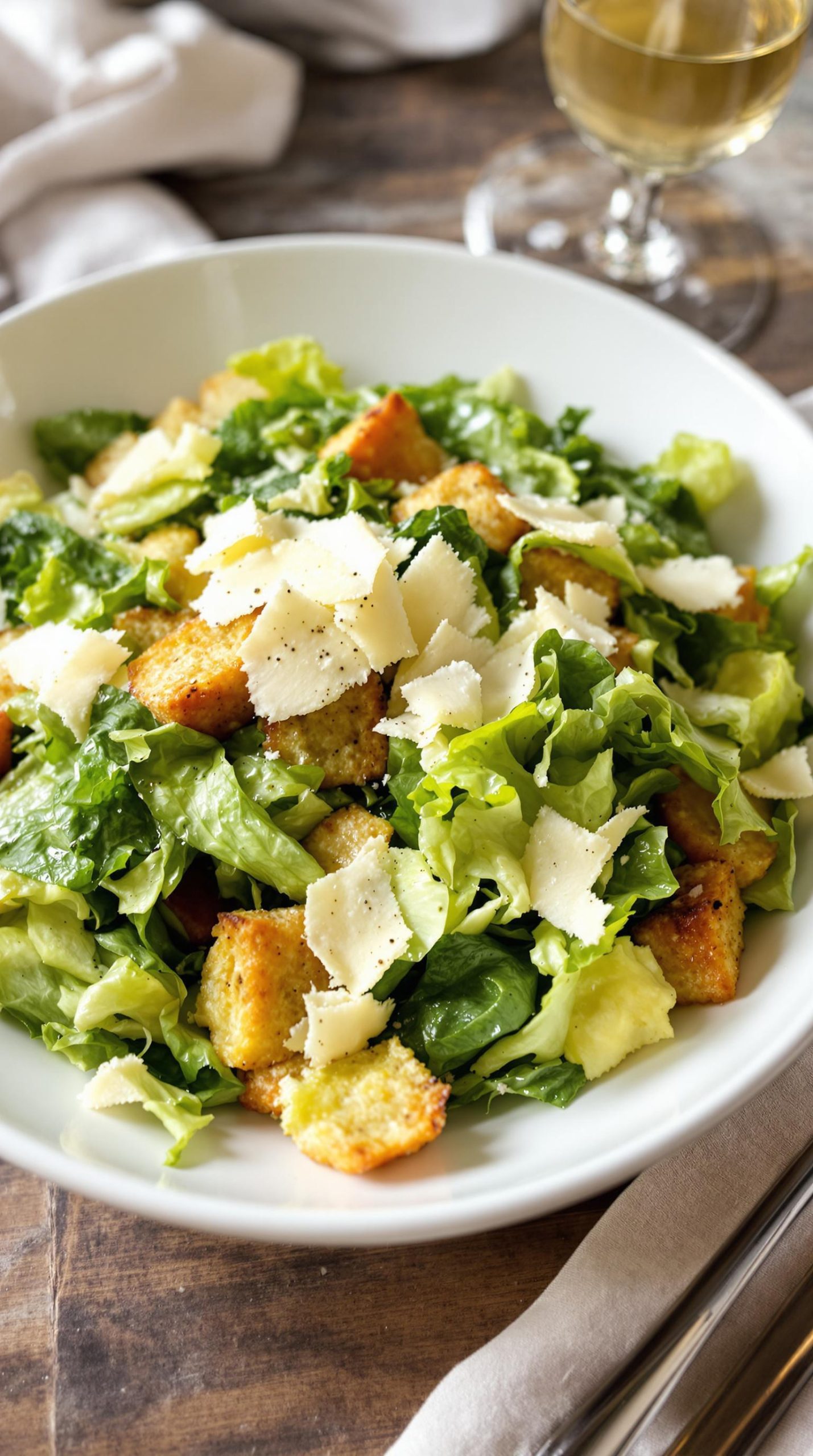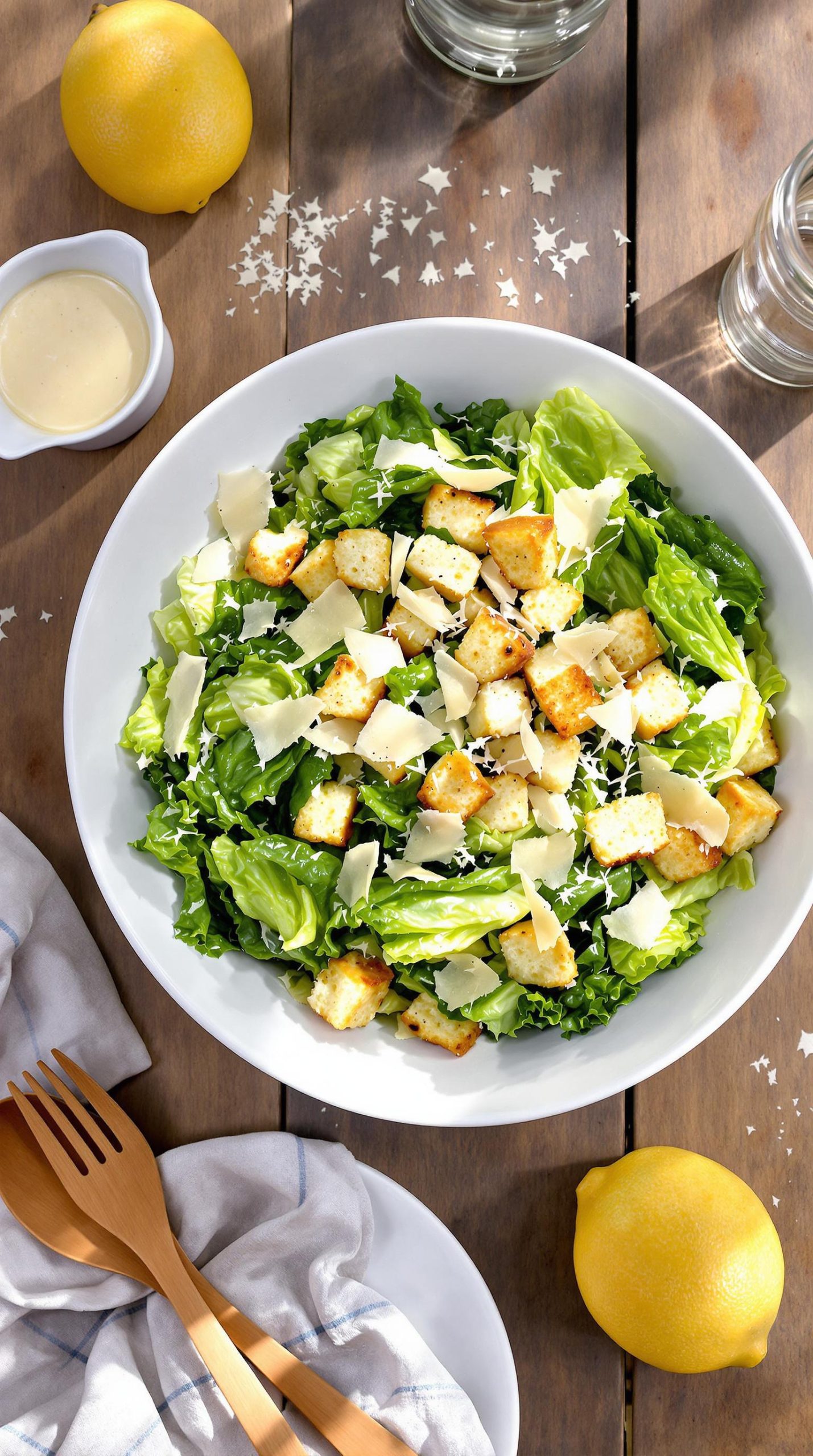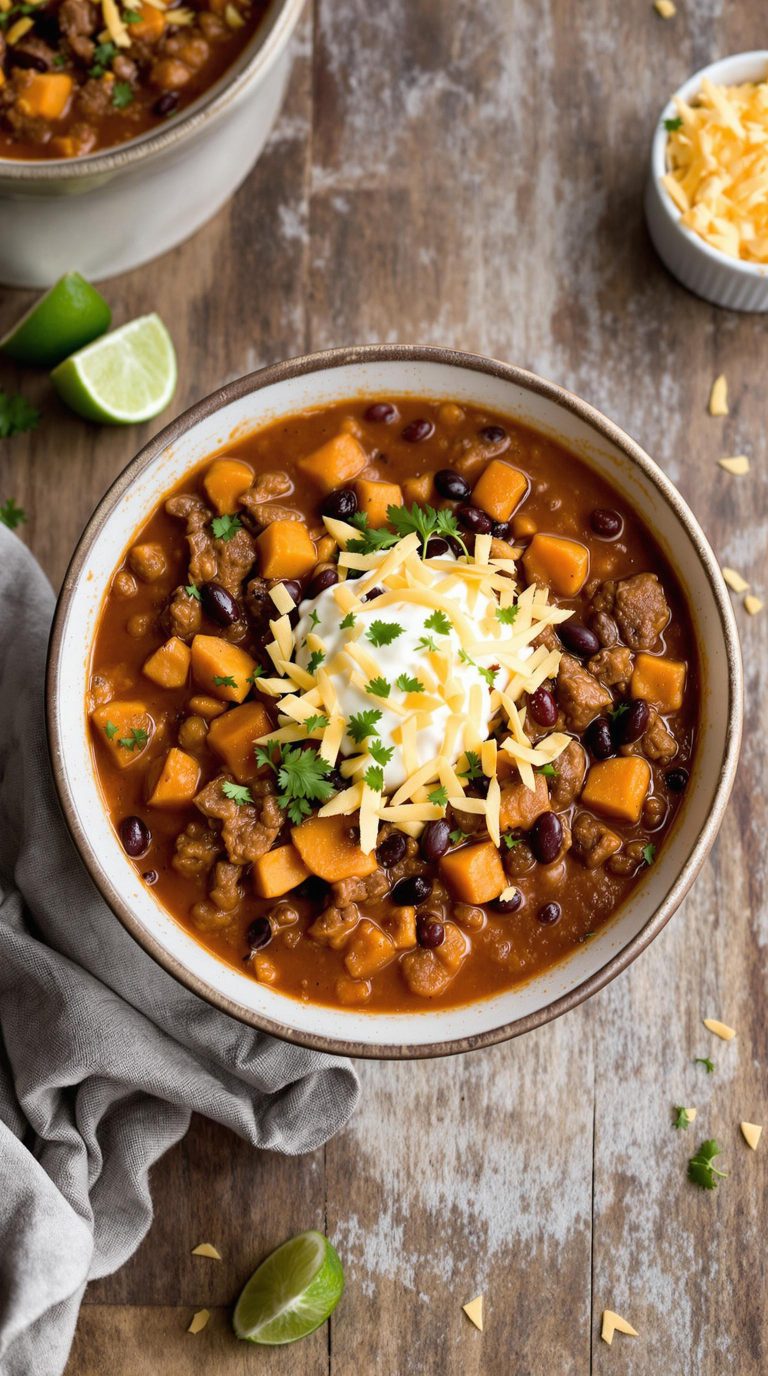Why You’ll Love this Classic Caesar Salad
Although many salads come and go with food trends, this Classic Caesar Salad remains a timeless favorite that never disappoints. The combination of crisp romaine lettuce, rich homemade dressing, savory parmesan, and crunchy croutons creates a perfect balance of textures and flavors in every bite.
What makes this recipe special? It’s the authentic dressing—anchovies, egg yolks, and garlic mashed into a creamy emulsion that coats each leaf perfectly.
No bottled stuff here. And trust me, once you taste the difference, you’ll never go back. Ready in minutes but impressive enough for guests.
What Ingredients are in Classic Caesar Salad?
The beauty of a classic Caesar salad lies in its relatively simple ingredient list, where each component plays a vital role in creating that distinctive flavor we all recognize. At its heart, this iconic salad revolves around crisp romaine lettuce and a rich, savory dressing made from scratch.
The combination might seem straightforward, but when these carefully selected ingredients come together, they create something truly magical on your plate.
- 3 cloves garlic
- 3 flat anchovy fillets, drained and minced
- 2 large egg yolks
- 1 tablespoon white wine vinegar
- 2 teaspoons red wine vinegar
- 1½ teaspoons Dijon mustard
- 1 teaspoon Worcestershire sauce
- ¼ teaspoon salt
- 1 tablespoon fresh lemon juice
- ¾ cup olive oil
- 2 heads romaine lettuce, torn into pieces, rinsed and spun dry
- ½ cup freshly-grated parmesan cheese
- 1 cup garlic-flavored croutons
When shopping for these ingredients, quality really matters. Opt for fresh romaine with crisp leaves, real Parmesan cheese (not the pre-grated stuff in a can), and good olive oil since it’s a key flavor in the dressing.
And about those anchovies—don’t skip them, even if you think you don’t like them. They dissolve into the dressing and provide that umami depth that makes Caesar salad so distinctive without any fishiness.
Trust me, they’re the secret ingredient that elevates this salad from good to unforgettable.
How to Make this Classic Caesar Salad

Creating the perfect Caesar dressing is all about technique and layering those incredible flavors. Start by making a flavorful paste—mince and mash 3 cloves of garlic with 3 flat anchovy fillets until they form a smooth mixture. This step is essential, as it creates the foundation of savory depth that defines a great Caesar.
Transfer this paste to a mixing bowl, then whisk in 2 large egg yolks, 1 tablespoon white wine vinegar, 2 teaspoons red wine vinegar, 1½ teaspoons Dijon mustard, 1 teaspoon Worcestershire sauce, ¼ teaspoon salt, and 1 tablespoon fresh lemon juice until completely combined.
Now comes the most delicate part—emulsifying the dressing. While continuously whisking (and I mean really put your arm into it), slowly drizzle in ¾ cup of olive oil in a thin, steady stream. This gradual addition is what transforms these separate ingredients into that silky, unified dressing we’re after.
Patience pays off here, as rushing this step can cause the dressing to break. For more consistent results, some chefs use a premium meat grinder to create perfectly minced anchovy and garlic paste that blends seamlessly into the dressing. Once your dressing has reached that perfect creamy consistency, it’s assembly time. In a large serving bowl, combine 2 heads of torn romaine lettuce pieces (already rinsed and thoroughly dried), ½ cup of freshly-grated Parmesan cheese, and 1 cup of garlic-flavored croutons.
Pour the prepared dressing over the salad ingredients and toss gently but thoroughly, making sure every piece of lettuce gets evenly coated.
The final rule of Caesar salad—serve it immediately! The crisp lettuce starts to wilt once dressed, and those crunchy croutons begin soaking up the dressing. Using premium fruit tools can make preparing ingredients like lemons for your dressing much more efficient and precise. The magic of a truly exceptional Caesar salad is in that perfect moment when all elements are freshly combined, with the contrast between the cool, crisp romaine and the rich, savory dressing at its absolute peak.
And there you have it—a restaurant-quality Caesar salad made entirely from scratch in your own kitchen. Who needs to pay premium prices for this classic when you can create the authentic version at home?
Classic Caesar Salad Substitutions and Variations
While traditional Caesar salad follows a time-honored formula, you can easily adapt this classic to suit your dietary needs or pantry limitations without sacrificing flavor.
For a vegetarian version, skip the anchovies or replace them with capers for that briny punch. No eggs? Try a tablespoon of mayonnaise instead.
Kale or spinach can stand in for romaine, creating a heartier texture that holds up beautifully to the robust dressing.
Want it protein-packed? Add grilled chicken, shrimp, or even chickpeas.
For a dairy-free option, nutritional yeast offers that cheesy flavor without the parmesan. Trust me, Caesar’s versatility is what makes it timeless.
What to Serve with Classic Caesar Salad
Now that you’ve mastered the art of Caesar salad customization, let’s talk about its perfect companions on the plate.
I’m a firm believer that Caesar salad pairs beautifully with Italian-inspired mains like grilled chicken, shrimp scampi, or a classic lasagna. The salad’s garlicky, tangy profile cuts through rich dishes wonderfully.
Want something simpler? Try it alongside a crusty baguette and good wine for a light lunch.
The crisp romaine and creamy dressing complement smoky foods too—think grilled steak or barbecued salmon. Those savory anchovy notes in the dressing? Perfect with anything from the sea.
Final Thoughts
As you explore the world of Caesar salad, I’m convinced you’ll discover why this classic has stood the test of time.
The perfect balance of creamy, tangy dressing with crisp romaine, sharp Parmesan, and crunchy croutons creates a symphony of textures and flavors that’s truly unmatched.
What makes this recipe special? It’s the authentic approach—real anchovies, egg yolks, and that perfect emulsion of olive oil.
No shortcuts here, just timeless technique.





